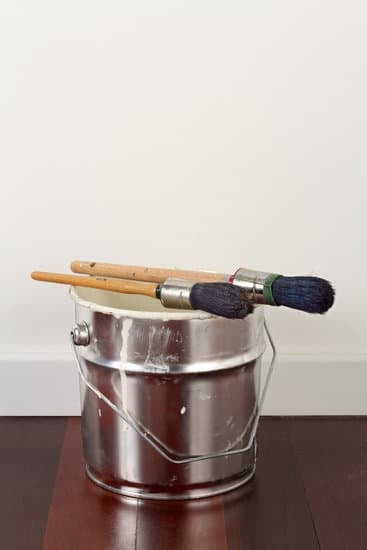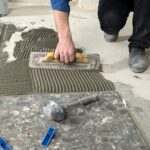In today’s digital age, a strong and reliable cell phone signal is essential for staying connected with friends, family, and colleagues. Many of us rely on our cell phones for work, entertainment, and emergencies, making it crucial to have good reception at home. In this article, we will explore how you can improve your cell phone signal at home to ensure that you never miss an important call or message.
Having a weak cell phone signal can be frustrating and inconvenient, especially when you are trying to make an important call or access the internet. Understanding the factors that can weaken your signal is the first step in finding a solution. We will discuss common causes of poor cell phone reception and how they can impact your ability to stay connected.
Additionally, we will provide practical tips on choosing the right location for your cell phone within your home, removing obstacles that may interfere with the signal, as well as using Wi-Fi calling and signal boosters as alternate solutions. Whether you are looking to improve your cell phone signal for a specific carrier or interested in DIY methods for enhancing reception, this article will cover everything you need to know about improving your cell phone signal at home.
Identifying the Factors That Can Weaken the Cell Phone Signal
When it comes to improving your cell phone signal at home, it’s essential to first identify the factors that can weaken the signal. Understanding these factors will help you take the necessary steps to improve your signal strength and ensure that you can stay connected at all times.
Physical Obstructions
Physical obstructions such as walls, windows, and even large pieces of furniture can interfere with your cell phone signal. The materials used in your home’s construction, such as concrete and metal, can also weaken the signal. To address this issue, consider moving to a location where there are fewer obstructions or rearranging your furniture to create a clearer path for the signal to travel.
Distance From the Nearest Cell Tower
The distance from the nearest cell tower can significantly impact your cell phone signal strength. If you live in a remote area or in a building with thick walls, you may be farther away from a cell tower, resulting in a weaker signal. In this case, using a signal booster or Wi-Fi calling can help improve your connectivity.
Network Congestion
High network traffic and congestion can also weaken your cell phone signal, especially during peak hours. This is more common in urban areas where there are many users competing for the same network resources. To overcome this challenge, consider using Wi-Fi calling when possible or exploring alternative carriers with better coverage in your area.
By considering these factors and implementing the necessary solutions, you can improve your cell phone signal at home and enjoy uninterrupted connectivity for calls, texts, and internet access.
Choosing the Right Location for Your Cell Phone
When it comes to improving your cell phone signal at home, one of the most important factors to consider is the location of your cell phone within your home. The strength of your cell phone signal can be greatly affected by where you place your device, so choosing the right location can make a significant difference in signal quality.
One way to improve your cell phone signal at home is to place your device near a window or on an exterior wall. This can help reduce interference from building materials and other obstructions, allowing for a stronger signal. Additionally, elevating your cell phone by placing it on a higher floor of your home can also improve signal strength, especially if you live in an area with poor coverage.
In some cases, different rooms within your home may have different levels of signal strength. It’s important to test different locations to find the spot that provides the best signal for making calls and using data services. By finding the right location for your cell phone, you can enjoy better call quality and faster data speeds right from the comfort of your own home.
| Location | Effect on Signal Strength |
|---|---|
| Near a window or exterior wall | Reduces interference and improves signal |
| Elevated position (higher floor) | Improves signal strength |
Removing Obstacles That May Interfere With the Signal
Having a strong cell phone signal at home is crucial for staying connected and being able to make and receive calls, send texts, and access the internet. However, there are several factors that can weaken the cell phone signal, making it frustrating to use your device. One of these factors is the presence of obstacles that can interfere with the signal.
One way to improve your cell phone signal at home is by removing obstacles that may be causing interference. Obstacles such as thick walls, metal structures, and electronic devices can all contribute to a weak signal. Here are some steps you can take to remove these obstacles:
- Place your router in a central location: If you have a Wi-Fi router at home, ensure that it is placed in a central location where it can provide strong coverage throughout your home.
- Avoid placing your phone near electronic devices: Electronic devices such as microwaves, cordless phones, and baby monitors can interfere with your cell phone signal. Keep your phone away from these devices to reduce interference.
- Clear obstructions: Move any furniture or objects that may be blocking the path between your cell phone and the nearest cell tower. This may involve rearranging furniture or moving closer to windows for better reception.
By taking these steps to remove obstacles that may interfere with the signal, you can improve your cell phone signal at home and enjoy better connectivity.
In addition to removing obstacles, you can also consider using signal boosters or Wi-Fi calling as alternate solutions for improving your cell phone signal. These methods can help strengthen the signal in areas where it may be weak due to external factors or carrier-related issues.
Using Wi-Fi Calling and Signal Boosters as Alternate Solutions
Using Wi-Fi calling and signal boosters are alternative solutions to improve your cell phone signal at home. These options can be particularly helpful in areas where the cellular network coverage is weak, or if you happen to live in a building with thick walls that block the signal.
Wi-Fi calling allows you to make and receive calls using a Wi-Fi network instead of relying on the cellular network. This can be especially beneficial if you have a strong Wi-Fi connection at home but struggle with poor cellular reception. Many modern smartphones have the option for Wi-Fi calling, and it can be easily activated in your phone’s settings.
Signal boosters, also known as cell phone repeaters or amplifiers, work by capturing an existing outside cell signal, amplifying it, and then rebroadcasting the stronger signal inside your home. This solution requires installation and may involve purchasing additional equipment, but can significantly improve your cell phone signal. When choosing a signal booster, make sure to pick one that is compatible with your specific carrier and frequency bands.
In addition to using Wi-Fi calling and signal boosters, some carriers offer their own solutions for improving cell phone signal at home. For example, some carriers provide femtocells or microcells that act as personal cell towers for better indoor coverage. Researching these carrier-specific options is another way to ensure a strong cell phone signal in your home.
| Wi-Fi Calling | Signal Boosters |
|---|---|
| Allows calling via Wi-Fi networks | Amplifies existing outside signal |
| Easily activated in smartphone settings | Requires installation & additional equipment |
Tips for Improving Cell Phone Signal for Specific Carriers
When it comes to improving your cell phone signal at home, it’s important to consider the specific carrier you are using. Different carriers may have varying levels of signal strength in different areas, so understanding how to optimize your signal for your particular carrier can make a big difference in the quality of your cellular connection.
Understanding Carrier Coverage Maps
Before trying to improve your cell phone signal at home, it’s essential to understand the coverage map of your specific carrier. Most major carriers provide coverage maps on their websites, which can give you an idea of the areas with strong and weak signal strength. By studying these maps, you can identify whether your location falls within an area of strong or weak coverage and plan accordingly.
Utilizing Carrier-Specific Signal Boosters
Some carriers offer their own signal boosting devices that are designed to enhance the cellular signal within your home. These devices work by amplifying the existing signal and rebroadcasting it within the premises, effectively eliminating dead zones and improving call quality. It’s worth exploring if your carrier offers such devices as they can be a convenient solution for improving cell phone signal at home.
Alternative Network Options
In some cases, switching to a different network or opting for virtual mobile network operators (MVNOs) could potentially improve your cell phone signal at home. MVNOs often utilize the networks of major carriers but may offer better reception in certain areas due to network prioritization or other factors. Researching alternative network options could lead you to better cellular connectivity in your home.
By taking these carrier-specific tips into account, you can tailor your approach to improving cell phone signals at home based on the unique factors and offerings of your specific carrier.
DIY Methods for Improving Cell Phone Signal at Home
Improving your cell phone signal at home can be achieved through various do-it-yourself methods that are cost-effective and relatively simple to implement. Here are some DIY tips and tricks to help you boost your cell phone signal:
- Install a femtocell or microcell: A femtocell, also known as a microcell, is a small device that connects to your internet router and acts as a miniature cell phone tower. It enhances your signal by providing a strong, localized connection for your mobile device.
- Use a homemade signal booster: You can create a DIY signal booster using household items like aluminum foil, a soda can, or even a small baking pan. These makeshift boosters can help amplify your cell phone signal by reflecting and directing the radio waves towards your device.
- Adjust the position of your antenna: If you have an external antenna on your phone or router, try repositioning it to see if there’s any improvement in signal strength. Sometimes simply changing the orientation of the antenna can make a difference in reception.
In addition to these DIY methods, there are also some common-sense approaches you can take to improve your cell phone signal at home.
- Maintain an unobstructed line of sight with the nearest cell tower: Large buildings, trees, and other physical obstacles can interfere with your signal. By positioning yourself or your device in an area with fewer obstructions, you may experience better reception.
- Keep interference-causing devices away: Certain electronic devices such as microwaves, cordless phones, and baby monitors can disrupt cellular signals. Placing these devices away from your smartphone or Wi-Fi router might enhance the strength of the reception.
By implementing these DIY methods and making simple adjustments around your home environment, you may find significant improvements in your cell phone signal without having to invest in expensive equipment or services.
Conclusion
In conclusion, having a strong cell phone signal at home is crucial for staying connected with loved ones, conducting important business, and accessing emergency services. By understanding the factors that can weaken your signal and taking proactive measures to improve it, you can ensure a reliable connection at all times.
Choosing the right location for your cell phone, removing obstacles that may interfere with the signal, and utilizing Wi-Fi calling and signal boosters are all effective ways to enhance your cell phone signal at home. Additionally, familiarizing yourself with specific tips for improving signal strength on different carriers can further optimize your connectivity.
For those who prefer a hands-on approach, there are also DIY methods such as creating a homemade cell phone signal booster or using aluminum foil to amplify the signal. Ultimately, by implementing these strategies and staying informed about technological advancements in this area, you can significantly improve your cell phone signal at home.
Whether you live in a rural area with poor coverage or simply struggle with weak signals indoors, there are plenty of solutions available to address this common issue. With the right knowledge and tools at your disposal, you can enjoy clear calls and seamless data usage from the comfort of your own home. For more information on how to improve your cell phone signal at home, visit “how-to-improve-your-cell phone-signal-at-home.html“.
Frequently Asked Questions
How Can I Get a Stronger Cell Phone Signal in My House?
Getting a stronger cell phone signal in your house can be achieved by using a cell phone signal booster or femtocell. These devices amplify the existing signal or create a small cell zone for better reception.
What Does * 3370 Do?
*3370 is a code that activates Enhanced Full Rate (EFR) mode on mobile phones. This can improve the voice quality during a call, but it may also drain the battery faster.
How Can I Improve My Mobile Signal Strength at Home?
Improving mobile signal strength at home can be done by positioning the phone near a window, minimizing obstructions, switching to Wi-Fi calling if available, and considering a network extender or Wi-Fi booster. Additionally, contacting your service provider about potential solutions is advisable.

I’m thrilled to have you here as a part of the Remodeling Top community. This is where my journey as an architect and remodeling enthusiast intersects with your passion for transforming houses into dream homes.





